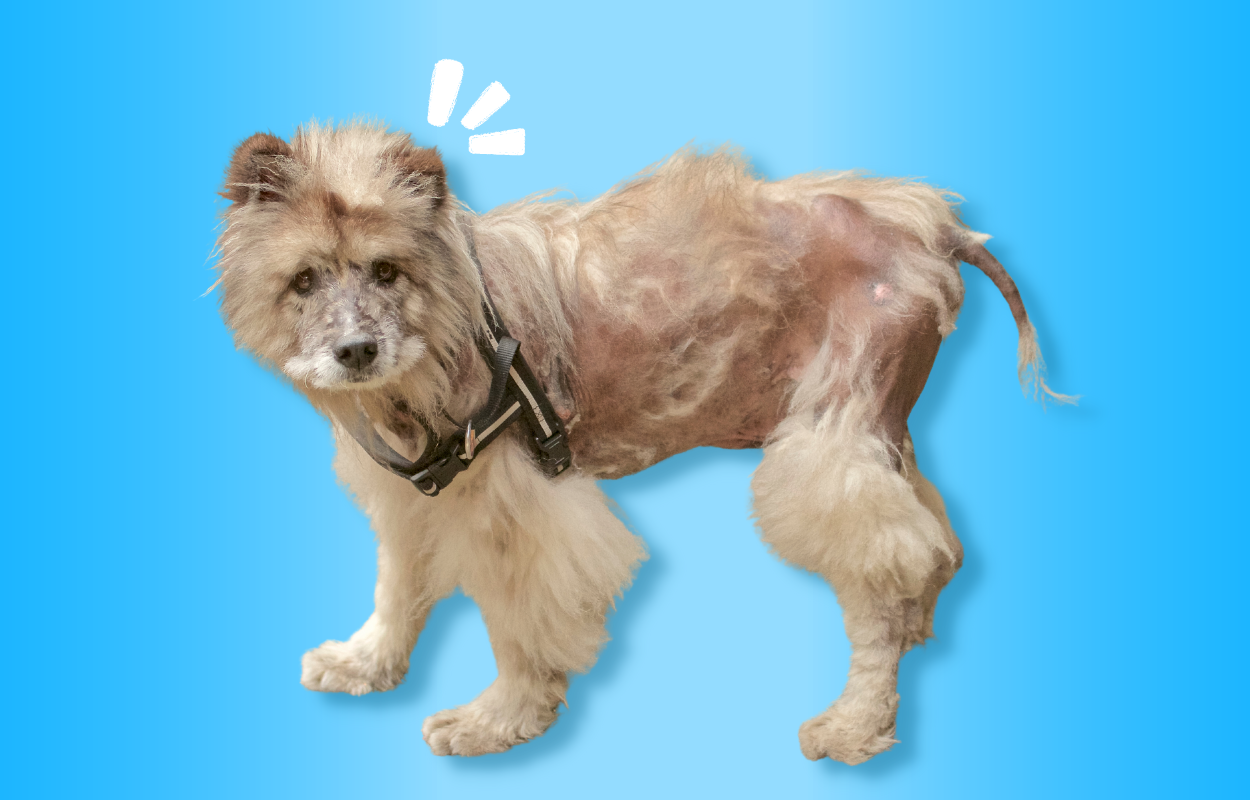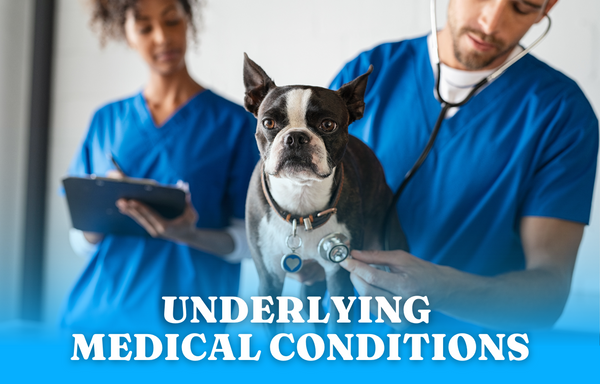
A Hair Situation: How To Combat Hair Loss In Dogs
May 05, 2023Don’t you just love fluffy, dog hair?
One minute you’re admiring its soft texture and the next minute you are… ah-ah-ahchoo!
Hair loss. You thought it’s only experienced by humans? Dogs have it all over the place too. Well. There goes the floor that you just previously sweeped. It’s full of dog hair again. Your adorable Belgian Malinois must be shedding.
It’s a good thing he does not have bald patches or thinning fur. Otherwise, he might be suffering from alopecia or abnormal hair loss and balding. Usually, this type of baldness happens in a symmetrical pattern. It may be temporary. It may be permanent. If it gets severe, the veterinarian is always there to help.
So how do we deal with all this hair loss? Swipe down to find out.
WHAT CAUSES HAIR LOSS IN DOGS?
There are many reasons why dogs suffer from hair loss. For starters, it could be:
ᐧ Allergies

This is usually a common cause. Particularly food. Other types include environmental (think molds, dust mites, pollens, and even fleas). When this happens, it is best to monitor your fur baby for any allergic reactions and have it treated to the veterinarian as soon as possible.
ᐧ Genetics

Ah, genetics. As the saying goes, it’s either in your favor or it’s not. If you happen to own a Chihuahua, Dachshund, Whippet, or Greyhound, your dog is most likely prone to hair loss. If you also own a West Highland White Terrier, Bulldog, or Retriever, it is not only prone to hair loss but also allergies. Hair loss or bald patches may occur around the chest, thigh, or neck area.
ᐧ Hot spots / Bacterial Infections

Instead of acute moist dermatitis or pyrotraumatic dermatitis, we shall cut the long, scientific words and call the inflamed lesions on your dog’s skin as hot spots. Sadly, you can’t tap them for WiFi. They are found anywhere in a dog’s body and may contain pus which are painful and itchy. Bacterial and fungal infections in dogs cause redness and scabbing. It is necessary that you have an appointment with your dog's veterinarian if you suspect that your dog has hot spots and bacterial infection.
ᐧ Parasites

Usually happening in warm weather, ticks and fleas that thrive on dog’s skin are one of the most common contributors of hair loss. Having an infestation of fleas would cause irritation. For more info on signs and symptoms of flea infestation, click this link.
ᐧ Underlying medical conditions

There are many health conditions that cause hair loss in dogs. One common example would be Cushing’s disease or Cushing’s syndrome (aka Hyperadrenocorticism) wherein an excess amount of cortisol is produced by the adrenal glands in a dog's body. If your dog has excess cortisol, it would lead to other serious health problems such as kidney damage. Stress and poor nutrition could also be one of the factors that contribute to hair loss. In cases like these, it is best to consult with your local veterinarian.
WHAT ARE THE SYMPTOMS OF HAIR LOSS IN DOG?
Depending on the cause, there are various signs or symptoms for hair loss in dogs. Here are examples of what to look out for:

TREATMENT FOR HAIR LOSS IN DOGS
The good news about this matter is that your dog's hair loss can be treated depending on the diagnosis. That is why it’s important to always have an appointment with your dog's veterinarian for professional advice.
ᐧ Balanced Diet

Remove foods that cause allergies in your dog's diet. If your dog is suffering from a nutritional deficiency, make sure it has all the nutrients and vitamins it needs in its diet. You can also add supplements with no additives like salmon oil. The omega-3 fatty acids in salmon oil supports healthy skin and coat which could lead to hair growth and fight skin itching and allergies that cause hair loss in dogs. Take Vital Pet Life’s salmon oil for dogs. It is 100% natural with no additives and is sustainably sourced (ensuring oceans and safeguarding seafood supplies for the future).
ᐧ Medications

Your veterinarian will prescribe medications like antibiotics specifically made for certain health conditions such as cushing’s disease and other diseases that cause hair loss in dogs.
ᐧ Anti-parasite products

If your dog is suffering from flea or tick infestation, your veterinarian will prescribe you medicines. Make sure to follow the prescription.
ᐧ Topical treatment
Topical treatment such as aloe vera shampoo can help with your dog’s hair loss and sensitive skin. Make sure to find a perfect shampoo that only incorporates natural ingredients to avoid further irritation. Vital Pet Life’s oatmeal aloe shampoo is made from natural ingredients. It does not contain any Sulfates, Parabens, or Isothiazolinones that are common in many other pet care products, leaving no room for worries about any skin rashes or irritation.
Hair loss is normal but, if it gets out of the ordinary, it is best to always seek expert advice. Now that we tackled the dilemma, don’t you just love fluffy, dog hair?
